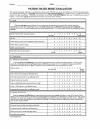Pain and disability reported in the year following a distal radius fracture: a cohort study
- PMID: 14588078
- PMCID: PMC270028
- DOI: 10.1186/1471-2474-4-24
Pain and disability reported in the year following a distal radius fracture: a cohort study
Abstract
Background: Distal radius fractures are a common injury that cause pain and disability. The purpose of this study was to describe the pain and disabilities experienced by patients with a distal radius fracture in the first year following fracture.
Methods: A prospective cohort study of 129 patients with a fracture of the distal radius was conducted. Patients completed a Patient-rated Wrist Evaluation at their baseline clinic visit and at 2, 3, 6 and 12 months following their fracture. The frequency/severity of pain and disabilities reported was described at each time point.
Results: The majority of patients experienced mild pain at rest and (very) severe high levels of pain with movement during the first two-months following distal radius fracture. This time is also associated with (very) severe difficulty in performing specific functional activities and moderate to severe difficulty in four domains of usual activity. The majority of recovery occurred within six-months, but symptoms persisted for a small minority of patients at one-year following fracture. Patients had the most difficulty with carrying ten pounds and pushing up from a chair. Resumption of usual personal care and household work preceded, and was more complete, than work and recreational participation.
Conclusions: This study demonstrated that the normal course of recovery following a distal radius fracture is one where severe symptoms subside within the first two-months and the majority of patients can be expected to have minimal pain and disability by six-months following fracture. This information can be used when planning interventions and assessing whether the progress of a patient is typical of other patients.
Figures







References
-
- MacDermid JC, Richards RS, Roth JH. Distal radius fracture: a prospective outcome study of 275 patients. J Hand Ther. 2001;14:154–169. - PubMed
-
- Hildebrand KA, Ross DC, Patterson SD, Roth JH, MacDermid JC, King GJ. Dorsal perilunate dislocations and fracture-dislocations: questionnaire, clinical, and radiographic evaluation. J Hand Surg [Am ] 2000;25:1069–1079. - PubMed
Publication types
MeSH terms
LinkOut - more resources
Full Text Sources
Other Literature Sources
Medical

